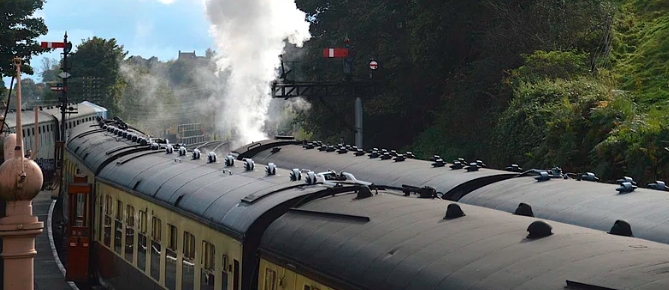The Scottish Railway Preservation Society (SRPS), a charity that operates scenic railway excursions and museums, has announced that it will have to suspend most of its heritage train tours until it can raise £500,000 for safety upgrades. The SRPS said that new regulations from the Office of Rail and Road (ORR) require all its locomotives and carriages to be fitted with an automatic braking system called TPWS (Train Protection and Warning System) by the end of 2023. Without this system, the SRPS trains will not be allowed to run on the mainline network, which covers most of the routes they offer.
The Impact of the Suspension
The SRPS said that the suspension of its train tours will have a significant impact on its income and operations, as well as on the local communities and businesses that benefit from the tourism generated by the heritage railways. The SRPS operates about 20 train tours a year, attracting around 10,000 passengers and generating about £250,000 in revenue. The SRPS also runs the Bo’ness and Kinneil Railway, Scotland’s largest heritage railway, and the Museum of Scottish Railways, which houses the largest collection of railway artefacts outside the National Railway Museum. The SRPS said that these attractions will remain open, but they rely on the income from the train tours to cover their costs.
The SRPS also said that the suspension of its train tours will affect the preservation and restoration of its historic fleet of locomotives and carriages, some of which date back to the Victorian era. The SRPS has over 100 vehicles in its collection, including steam, diesel and electric locomotives, and a variety of passenger and freight carriages. The SRPS said that it has invested over £2 million in the past decade to maintain and improve its vehicles, but it will need more funds to comply with the new safety standards.
The Appeal for Donations
The SRPS has launched an appeal for donations to help it raise the £500,000 needed for the safety upgrades. The SRPS said that it has already secured £100,000 from its own reserves and £50,000 from a grant from the Railway Heritage Trust, but it still needs another £350,000 to complete the project. The SRPS said that it hopes to resume its train tours in 2024, if it can raise the funds in time.

The SRPS said that it appreciates the support and understanding of its customers, members, volunteers and staff, who have been loyal and dedicated to the cause of preserving Scotland’s railway heritage. The SRPS said that it is confident that it can overcome this challenge and continue to offer unique and memorable experiences to the public. The SRPS said that it welcomes any donations, large or small, to help it achieve its goal. Donations can be made online through the SRPS website or by cheque to the SRPS office.
The Reaction from the ORR
The ORR, the independent regulator of Britain’s railways, said that it recognises the value and importance of the heritage railway sector, but it also has a duty to ensure the safety of all rail users. The ORR said that the TPWS system is a vital safety feature that prevents trains from passing signals at danger or exceeding speed limits, and that it has been mandatory for all trains running on the mainline network since 2004. The ORR said that it has granted several extensions and exemptions to the heritage railway sector over the years, but it cannot compromise on the safety standards any further.
The ORR said that it has been working closely with the heritage railway sector to help them comply with the TPWS requirements, and that it has offered guidance, advice and funding opportunities. The ORR said that it has also supported the development of a cheaper and simpler version of the TPWS system, called TPWS+, which is specifically designed for heritage trains. The ORR said that it hopes that the SRPS and other heritage railway operators will be able to install the TPWS+ system and resume their train tours as soon as possible.


















